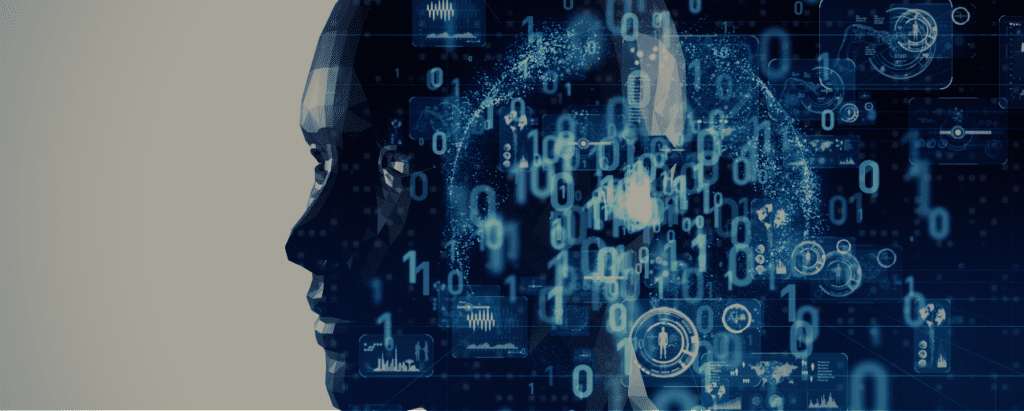AI in Cybersecurity: How Artificial Intelligence is Strengthening Digital Security in 2025
With cyber threats evolving rapidly, traditional security measures are no longer sufficient. In 2025, Artificial Intelligence (AI) has emerged as a game-changer in cybersecurity, offering proactive threat detection, automated response systems, and enhanced protection against cyberattacks.
In this article, we will explore how AI is transforming cybersecurity, its benefits, use cases, and the best AI-driven security tools available today.
Why AI is Crucial for Cybersecurity in 2025?
Cybercriminals are using advanced techniques like AI-powered malware, phishing attacks, and ransomware. AI helps combat these threats by:
- Real-Time Threat Detection: Identifying potential threats before they cause harm.
- Automated Response: Quickly neutralizing cyber threats without human intervention.
- Behavioral Analysis: Detecting anomalies in user behavior to prevent data breaches.
- Predictive Analytics: Forecasting potential security threats using AI algorithms.
- Improved Incident Response: Reducing downtime and minimizing damage from cyberattacks.
Now, let’s dive into how AI is revolutionizing cybersecurity in various ways.

1. AI-Powered Threat Detection & Prevention
AI enhances cybersecurity by monitoring networks and detecting unusual patterns that may indicate a cyberattack. Traditional security systems rely on predefined rules, whereas AI adapts and learns from new threats in real time.
Key Features:
- Machine Learning Algorithms: Analyzes large amounts of data to detect anomalies.
- Threat Intelligence: Uses global security databases to identify emerging cyber threats.
- AI-Based Firewalls: Blocks unauthorized access based on behavioral patterns.
- Zero-Day Attack Prevention: Identifies and mitigates previously unknown vulnerabilities.
AI-driven cybersecurity tools like Darktrace and IBM Watson Security use these technologies to offer robust threat protection.
2. AI in Phishing & Fraud Detection
Phishing attacks are one of the most common cyber threats. AI helps identify suspicious emails, messages, and websites by analyzing behavioral patterns, language, and metadata.
How AI Prevents Phishing?
- Natural Language Processing (NLP): Detects fraudulent emails by analyzing writing styles.
- AI-Powered Email Filters: Blocks suspicious emails before they reach inboxes.
- Fraudulent Website Detection: Identifies fake websites used for data theft.
- Real-Time Alerts: Notifies users of potential phishing attempts.
AI security solutions like Google’s Safe Browsing and Microsoft Defender use AI to enhance phishing prevention.
3. AI in Endpoint Security & Malware Detection
AI plays a critical role in protecting devices like computers, smartphones, and IoT systems from cyber threats. Traditional antivirus solutions rely on signature-based detection, while AI analyzes real-time behavior to detect malware.
Benefits of AI in Malware Protection:
- Behavioral Analysis: Detects malware by analyzing how software behaves.
- Ransomware Protection: AI identifies and blocks ransomware before it encrypts files.
- Automated Patch Management: AI updates software to fix vulnerabilities.
- Adaptive Learning: AI continuously improves detection capabilities.
Top AI-driven malware protection tools include Cylance, Symantec, and CrowdStrike.
4. AI in Identity & Access Management (IAM)
AI enhances identity verification and access control to prevent unauthorized access to sensitive systems.
AI-Powered Security Measures:
- Biometric Authentication: Uses facial recognition and fingerprint scanning.
- Adaptive Authentication: Adjusts security levels based on user behavior.
- AI-Based Fraud Detection: Identifies suspicious login attempts.
- Multi-Factor Authentication (MFA): Adds extra layers of security.
Tools like Okta and IBM Cloud Identity use AI to strengthen authentication processes.
5. AI in Security Operations & Incident Response
AI automates security operations, reducing the time required to detect and respond to threats. AI-driven Security Information and Event Management (SIEM) tools analyze massive datasets to identify cyber threats quickly.
How AI Improves Incident Response?
- Automated Threat Containment: AI isolates compromised devices.
- Forensic Analysis: AI helps in post-attack investigations.
- Predictive Threat Intelligence: Identifies potential risks before they occur.
- Security Orchestration, Automation, and Response (SOAR): Integrates AI with cybersecurity workflows.
Popular AI-driven security platforms include Splunk, IBM QRadar, and Palo Alto Networks.

6. AI in Cloud Security
With businesses shifting to cloud computing, securing cloud environments has become a top priority. AI-powered security solutions help monitor cloud activity and detect unauthorized access.
AI’s Role in Cloud Security:
- Cloud Threat Detection: Identifies abnormal activities in cloud applications.
- AI-Driven Encryption: Enhances data protection in cloud storage.
- Access Control Monitoring: Ensures only authorized users access cloud data.
- AI-Powered Data Loss Prevention (DLP): Prevents accidental or intentional data leaks.
Leading AI-powered cloud security platforms include Microsoft Azure Sentinel and Google Chronicle.
7. AI in IoT Security
The rise of the Internet of Things (IoT) has increased cybersecurity risks. AI helps secure IoT devices by monitoring network traffic and detecting anomalies.
How AI Secures IoT Devices?
- Device Authentication: Verifies IoT devices before granting access.
- Real-Time Threat Detection: Identifies unusual IoT behavior.
- Self-Healing Systems: AI automatically fixes security vulnerabilities.
- Network Segmentation: Restricts unauthorized IoT communication.
AI-powered IoT security platforms include Armis and AWS IoT Device Defender.
Top AI Cybersecurity Tools in 2025
Here are some of the leading AI-powered cybersecurity tools that businesses should consider:
| Tool | Use Case | Key Feature |
|---|---|---|
| Darktrace | AI-Powered Threat Detection | Autonomous threat response |
| IBM Watson Security | AI for Incident Response | AI-driven risk analysis |
| Cylance | AI-Based Malware Protection | Predictive AI security |
| CrowdStrike Falcon | Endpoint Security | Behavioral-based threat detection |
| Microsoft Azure Sentinel | Cloud Security | AI-powered threat intelligence |
| Google Chronicle | Enterprise Security | Big data security analytics |
Conclusion
AI is revolutionizing cybersecurity in 2025 by providing advanced threat detection, real-time response, and predictive security measures. As cyber threats continue to evolve, AI-powered solutions are essential for businesses and individuals looking to protect their digital assets.
By adopting AI-driven security tools, organizations can proactively defend against cyber threats, reduce risks, and ensure a safer digital environment. Investing in AI-powered cybersecurity is not just an option—it’s a necessity in 2025!

